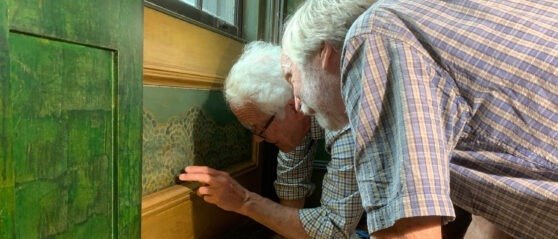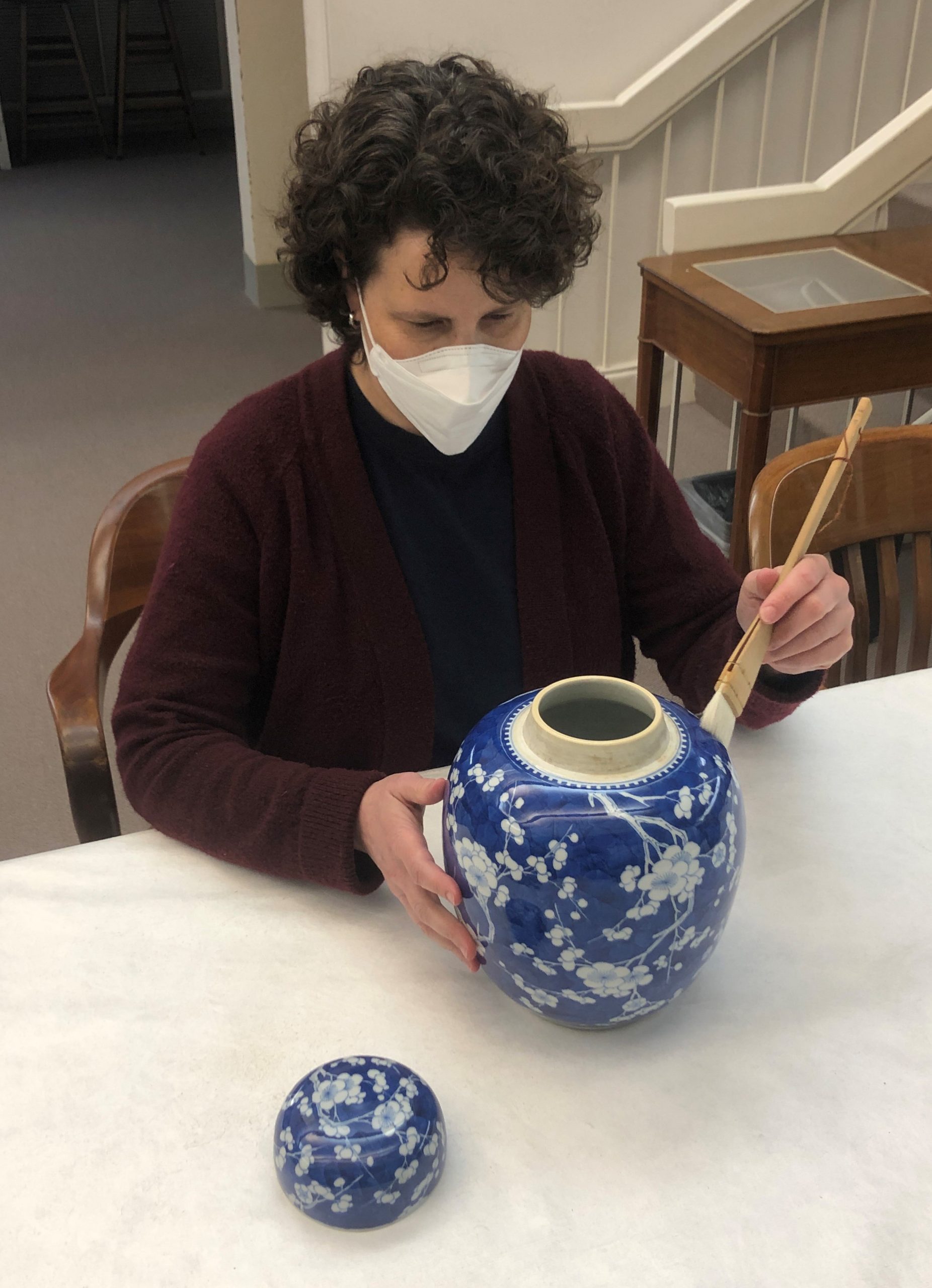The Conservation Work Begins!

August 01, 2022 | Ellen Chase and Jenifer Bosworth
If you’ve visited the museum on a weekday recently, you may have heard noises coming from inside the Peacock Room, and your view of the space may have been temporarily limited by metal gates. The first phase of the conservation project has started, and those noises you hear are NMAA staff and contractors from Aeon Preservation Services hard at work! As we talked about in our previous blog, the first phase focuses on the treatment of the shutter exteriors, their associated windows and window surrounds, and four floor vent covers that were not addressed in the earlier treatment campaign that took place in the 1990s.
Before we could do that, however, the ceramics from the exhibition The Peacock Room Comes to America had to be deinstalled. Members of the Department of Collections Management carefully removed each of the ceramics from the shelves where they had been on display and safely transported them to storage. This display of ceramics in the Peacock Room was a little unusual; in addition to ceramics from the Freer collection featured on the north and east walls, recently manufactured ceramics that are similar in appearance were on view on the west and south walls of the room. These more recent ceramics are clearly and permanently marked as later pieces inspired by earlier ones. An important part of the deinstallation process was to differentiate between the two and to store them separately, with the pieces from the Freer collection going back to collections storage and the newer pieces being moved to an entirely separate space.
The blue-and-white ceramics included in The Peacock Room Comes to America have been on view since 2017, and like the room itself, they have been exposed to dust and air pollution. As a result, all of the pieces need to be examined and cleaned in order to remove grime. As part of each object’s care, we check its condition when it comes off exhibition, so we are currently in the process of carefully examining each of the ceramics that were on view. Each piece will then be dusted with very soft brushes and, if necessary, additional cleaning will be done.
With the ceramics safely removed from the space, we were then able to examine the shutters and vents more closely than could be done when the room was still open to the public. Tests were done to determine the best way to reduce the adhesive that remains on the floor vent covers from the old carpet and wood floor. It turns out that freezing small sections of the adhesive works well, which causes the adhesive to become brittle and easier to lift off delicately. This part of the treatment is progressing nicely, and the adhesive is almost completely removed from the surface of all four vents. A black waxy material remains on some areas of the design, so taking care of this will be the next step for the floor vents.
We’ve also been spending time closely examining the shutters and getting a clearer picture of what needs to be done to repair the damage and to keep them safe when opened. Each shutter on each window has slightly different issues, so somewhat different treatments will be necessary for each one. We are currently discussing possible treatment options. Once the next steps have been decided and the pretreatment examination and photography are completed, work will begin in earnest. Stay tuned for the next blog to hear how things are progressing.

Collections staff Brian Abrams and Jenny Bright deinstalling the Peacock Room prior to conservation work.
Image 1 of 5

Conservator Ellen Chase cleaning one of the blue-and-white Kangxi porcelains that was on view in the Peacock Room.
Image 2 of 5

Conservator Mohamed Abodour removing old mastic from decorative vent surrounds.
Image 3 of 5

Conservator F. Carey Howlett documenting condition of shutters & architrave before treatment.
Image 4 of 5

Conservators F. Carey Howlett and Henry Schlenk assessing condition of damage in dado panel below central window.
Image 5 of 5

